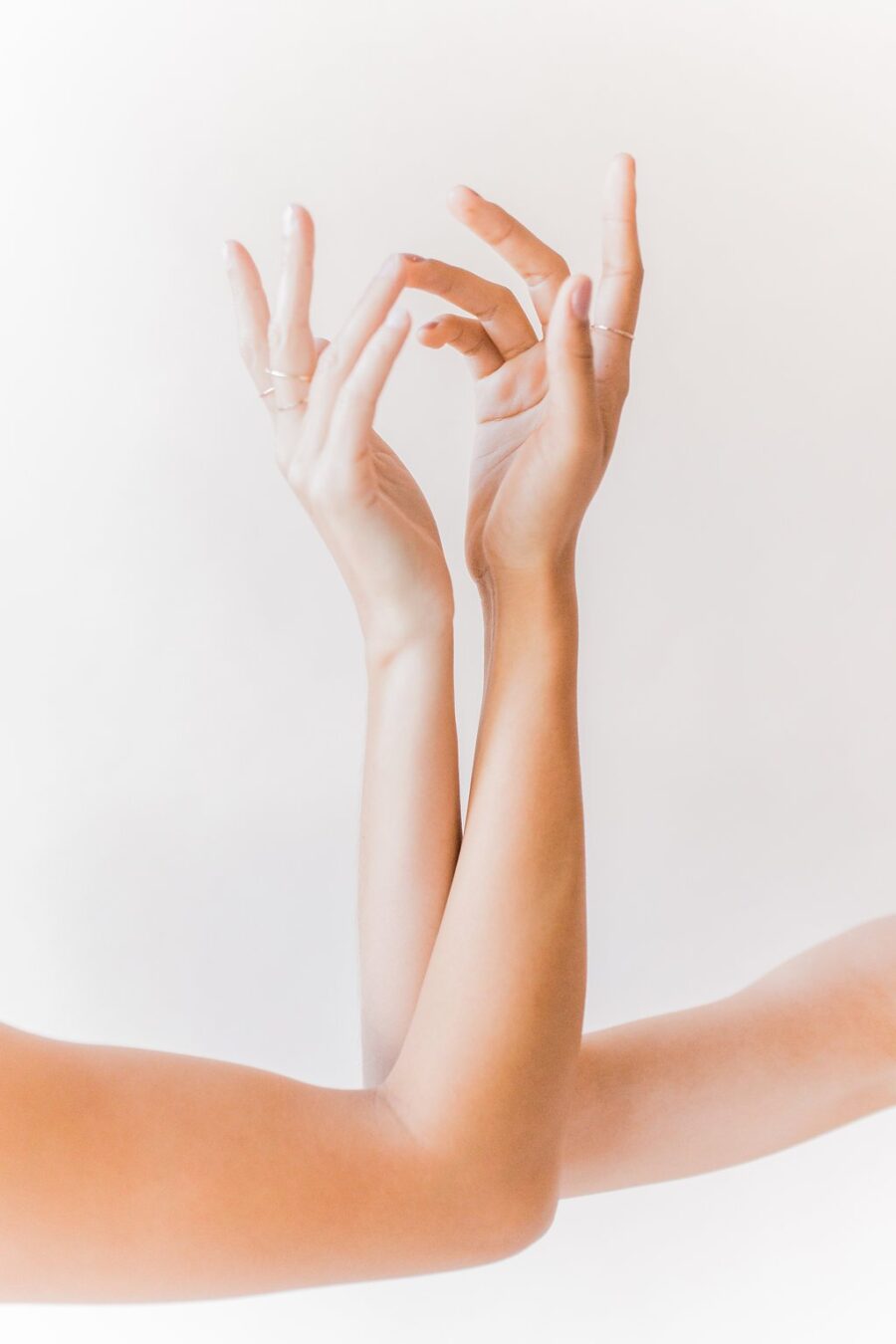
Reclaiming The Asian American Experience: One Girl’s Story Of How To Support
A Personal Story About Reclaiming The Asian American Experience
A few years ago, I heard the Coldplay song “Yellow” and the lyrics never left me: “Look at the stars / Look how they shine for you / And everything you do / Yeah they were all yellow.”
Although it was likely never Coldplay’s intention to write a song called “Yellow” about the Asian American experience, growing up, yellow was inevitably a charged word for me. It implied a certain ethnic slur aimed at my skin, something supposedly exotic deemed by people born in the same country as me.
Say yellow and there are countless memories I can recall: flipping through Seventeen magazine’s smoky eye tutorials telling me to “blend into your crease” (non-existent if you have monolids). Bringing “stinky” dumplings to school for lunch. As a girl, naively praying every night that God would make me blonde, like my favorite Disney princesses.
At the time, I didn’t have the ability to articulate frustrations behind “diversity” or “representation” in my Asian American minority experience. Instead, I just knew I had always preferred “golden undertones” in talking about my skin, implying a beautiful, even royal connotation. But when Coldplay’s song came out, it redefined yellow for me. Suddenly, it was cheerful, bright, and full of life—a color that in the song is used to describe the the stars, a dreamy love, and aspirations. I loved being yellow.
The Rise Of Asian American Representation In Mainstream Media
By now, it’s not new news: Crazy Rich Asians, which came out in August, has made waves as the first Hollywood studio film in 25 years to feature a majority-Asian cast, marking a watershed moment for Asian American representation in the media. It went on to become a box-office hit, grossing $168 million (and counting), and recently broke the record as the highest grossing romcom in the past decade.
“Crazy Rich Asians has made waves as the first Hollywood studio film in 25 years to feature a majority-Asian cast, marking a watershed moment for Asian American representation in the media.”
In a pivotal last scene of the film, a Mandarin reprise of Coldplay’s “Yellow” comes on, and that’s when the waterworks began. I discovered I wasn’t the only one to see the song with different eyes, as CRA director Jon Chu later revealed in his poignant letter to Coldplay requesting rights to use the song.
Crazy Rich Asians was a crazy good film, simply put, but also a powerful moment for me as an Asian American. When I saw the movie, I was hit by a foreign and shocking feeling watching people who looked just like me on the big screen. I wasn’t really used to it… but I loved every minute of it. Chrissy Teigen put it best: “You never know how much you miss being represented on screen until you actually see what it’s like to be represented.”
How Allies Can Better Understand The Asian American Experience
While Crazy Rich Asians’ premiere moment has crested and swelled, the fight for equal representation for Asian Americans is just beginning to pick up momentum. For starters, here are just three ways for allies to better understand the Asian American experience:
1. Take a visual route to learn the history behind Asian media representation
As the cast of CRA have pointed out, it just feels like the right time in history for Asian Americans to voice their own stories, and for others to champion them. And as the saying goes: when it rains, it pours.
“It just feels like the right time in history for Asian Americans to voice their own stories, and for others to champion them.”
In just the past three months, the release of Crazy Rich Asians created a seemingly-planned domino effect, followed by series of flicks with Asian leads. For example, the Netflix original To All the Boys I’ve Loved Before (a Netflix original about an accidental high school romance), Searching (a modern drama starring John Cho), and A Simple Affair (with Henry Golding opposite Blake Lively and Anna Kendrick) have all been released. Even comedian Awkwafina just hosted Saturday Night Live.
A simple (and fun) way to start is have a movie marathon, and add momentum to a blossoming diversity moment. Then go backwards in time. Before Crazy Rich Asians, Joy Luck Club was the latest movie to feature a majority Asian-American cast, and some classics like Crouching Tiger, Hidden Dragon still remain. For shorter flicks, check out TV shows like ABC’s Fresh Off the Boat or Wong Fu Productions’ Youtube channel and films.
2. Get rid of stereotypes and be aware of microaggressions
For the longest time, Asian Americans have straddled this middle line of being the “model minority,” culturally primed to keep our heads down and work hard, respect authority, and not cause trouble in our neighborhoods. Arguably, this has been advantageous. Crime rates are low in Asian neighborhoods. Silicon Valley is brimming with Asian professionals, and their kids are entering Ivy leagues in droves (while making up only 5.6 percent of the US).
When it comes to mainstream culture, matcha has seeped into third-wave coffee shops. Sephora has an entire section dedicated to Korean “K-beauty.” We definitely can’t stop tapping into the life-changing magic of tidying up, nor can we imagine a world without without Mindy Kaling’s witty humor or spontaneous boba runs.
“Knowledge is power, so start learning. You may be surprised at some of the things you never remembered learning in history class.”
However, this also doesn’t mean that all Asians “had it good” or are demure, grew up playing an instrument, or had a tiger mom. By assuming that an Asian is good at math, for example, or that a Chinese restaurant carries a “ching chong” type name can be forms of microaggression that only further perpetuate a toxic culture. There’s actually a more oppressed narrative when it comes to Asian Americans: only a select few know about Japanese internment camps or the story of Vincent Chin, for example. Knowledge is power, so start learning. You may be surprised at some of the things you never remembered learning in history class.
And remember: in Asia alone, there are 48 countries with distinct cultures, without counting indigenous groups, who bring their own backgrounds to their American experiences. I’ve noticed that the experience of a Chinese American growing up in an Asian-concentrated suburb, for example, is very different than the experience of being the only Vietnamese American in their town, or an immigrant family vs. someone whose family has spent multiple generations in America.
3. Consider operating on a different wavelength…embrace (and celebrate) the differences
“A huge tenet to advancing diversity is considering that someone else’s experience of the world might not parallel your own.”
A huge tenet to advancing diversity is considering that someone else’s experience of the world might not parallel your own. That doesn’t make it any less valid, or an outlier from the norm. Sometimes that just means being open-minded to hearing someone else’s story.
Other times, cultural differences mean being willing to literally tune in to another wavelength. Linguists have conducted research to show that different cultures have different communication patterns. This includes different “pause times” when taking turns to talk in a conversation and the amount of eye contact being made (and what that means). Their research showed that the average “pause time” was 200 milliseconds long, rising to 470 for Danish speakers and falling to just 7 for the Japanese. Is someone seemingly cutting you off? Maybe they don’t intend to be rude. Or is someone responding what you think is “too slowly”? Maybe they are engaged, but both parties need to adapt to a common middle ground to communicate.
Diversity is no easy charter, whether for Asian Americans or another racial or social group. However, there’s never been a more apt time for us either. Golden hour is commonly referred to as the most critical hour for treating an emergency after a critical injury—or the most beautiful time of day at dusk.
And guess what? However you read it, it’s golden hour for Asian Americans.
RELATED READING
Alice is a California-based writer thinking on the things shaping urban living, the modern woman’s experience, and living a conscious life of impact in light of a bigger world. A graduate of Northwestern University’s Medill School of Journalism, she recently spent a year abroad in Peru working with a microfinance project. You can follow her latest creative endeavors and musings at Mine Felicity or on Instagram at @alice.zhng.
